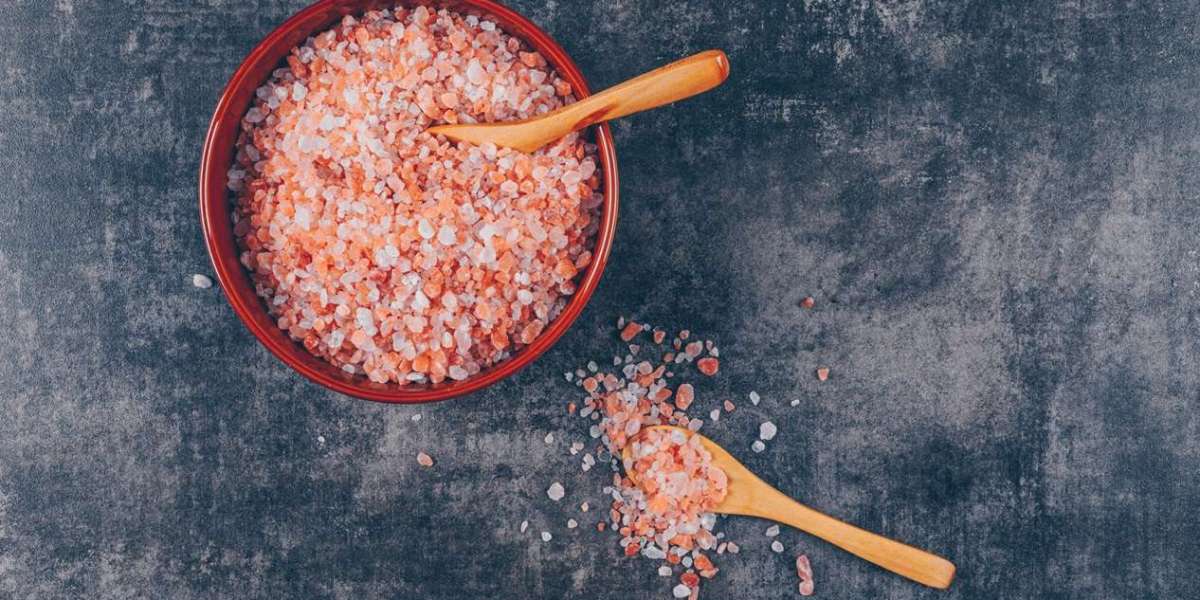Hey there, salt enthusiasts and health-conscious folks! Today, we're diving deep into the world of Himalayan pink rock salt. You've probably seen this pretty pink salt popping up everywhere, from fancy restaurants to health food stores. But what's the big deal? Is it really worth swapping out your regular table salt for this rosy alternative? Let's find out!
What Exactly Is Himalayan Pink Rock Salt?
Before we jump into the benefits, let's talk about what this salt actually is. Himalayan pink rock salt comes from the Khewra Salt Mine in Pakistan, near the Himalayas. It's believed to be one of the purest forms of salt available, formed millions of years ago from ancient sea salt deposits.
The Pink Hue: More Than Just Pretty
That signature pink color? It's not just for show! The hue comes from trace minerals like iron, magnesium, and potassium. These minerals not only give the salt its color but also contribute to its potential health benefits.
The Nutritional Profile: More Than Just Sodium
When we think of salt, we usually just think of sodium. But Himalayan pink rock salt is a bit different. Here's what makes it stand out:
- Mineral-rich: It contains up to 84 different minerals and trace elements.
- Lower sodium: Some studies suggest it might have slightly less sodium than regular table salt.
- No additives: Unlike table salt, it doesn't contain added iodine or anti-caking agents.
Health Benefits: Separating Fact from Fiction
Now, let's get to the good stuff – the potential health benefits. But remember, while there are many claims out there, not all of them are backed by solid scientific evidence. Let's look at what we know:
1. Electrolyte Balance
Himalayan pink rock salt contains essential electrolytes like sodium, potassium, and magnesium. These minerals play a crucial role in:
- Maintaining proper hydration
- Regulating nerve and muscle function
- Balancing blood pH
This makes it a popular choice among athletes and those living in hot climates. However, it's important to note that you can get these electrolytes from other sources too, including regular table salt and a balanced diet.
2. Potential Digestive Benefits
Some people swear by using Himalayan pink rock salt to aid digestion. The theory is that it can:
- Stimulate the production of digestive enzymes
- Help balance stomach acid
While there's anecdotal evidence supporting these claims, more scientific research is needed to confirm these benefits.
3. Possible Respiratory Benefits
Here's an interesting one – some people use Himalayan pink rock salt in salt lamps or inhalers, claiming it can improve respiratory health. The idea is that the salt releases negative ions that can:
- Purify the air
- Reduce allergens
- Improve breathing
Again, while many people report feeling better, the scientific evidence is limited. More studies are needed to confirm these effects.
4. Potential Sleep Aid
Some folks believe that the negative ions released by Himalayan pink rock salt can improve sleep quality. They claim it can:
- Reduce stress
- Promote relaxation
- Improve overall sleep patterns
While these effects are possible, they're not scientifically proven. If you're having sleep issues, it's always best to consult with a healthcare professional.
Culinary Uses: Beyond the Health Claims
Health benefits aside, Himalayan pink rock salt has gained popularity in the culinary world. Here's why chefs and home cooks alike are reaching for the pink stuff:
Unique Flavor Profile
Many people describe Himalayan pink rock salt as having a more complex, nuanced flavor compared to regular table salt. This can add depth to your dishes, making it a favorite among foodies and professional chefs.
Versatility in the Kitchen
From seasoning to finishing, Himalayan pink rock salt can be used in various ways:
- Cooking: Use it just like regular salt in your recipes.
- Grilling: Large salt blocks can be heated and used for cooking meats and vegetables.
- Finishing: Sprinkle coarse grains over completed dishes for a crunchy texture and burst of flavor.
- Presentation: The pretty pink color can add visual appeal to your plates.
Environmental Considerations
When discussing Himalayan pink rock salt, it's important to consider the environmental impact. Here are some points to ponder:
Mining Practices
The salt is typically mined using traditional methods, which can be less damaging to the environment compared to some modern mining techniques. However, increased demand could lead to more intensive mining practices.
Transportation
Since Himalayan pink rock salt comes from a specific region, it often has to travel long distances to reach consumers worldwide. This transportation contributes to its carbon footprint.
Sustainability Concerns
As with any natural resource, there are questions about the long-term sustainability of Himalayan pink rock salt mining. It's a finite resource, and increased popularity could lead to faster depletion.
Quality Matters: Choosing the Right Salt
If you're interested in trying Himalayan pink rock salt, it's important to choose a high-quality product. Here are some tips:
- Look for reputable sources: Choose salt from established Himalayan Pink Rock Salt Exporters, Manufacturers, and Wholesale Suppliers who follow good manufacturing practices.
- Check for certifications: Some companies have their salt tested by third-party labs for purity and mineral content.
- Consider the grain size: Different grain sizes are better for different uses. Finer grains are great for cooking, while coarser grains work well as finishing salts.
- Avoid additives: One of the benefits of Himalayan pink rock salt is its purity, so look for products without added ingredients.
Important Notes and Precautions
Before you go all-in on Himalayan pink rock salt, keep these points in mind:
Iodine Content
Unlike iodized table salt, Himalayan pink rock salt doesn't contain significant amounts of iodine. Iodine is crucial for thyroid function, so if you're switching entirely to pink salt, make sure you're getting iodine from other sources in your diet.
Sodium Intake
While Himalayan pink rock salt might have some additional minerals, it's still primarily sodium chloride. If you're watching your sodium intake for health reasons, remember that pink salt counts towards your daily limit just like any other salt.
Not a Miracle Cure
Despite its popularity and the many claims surrounding it, Himalayan pink rock salt is not a cure-all. It's important to maintain a balanced diet and healthy lifestyle overall.
The Bottom Line: Should You Make the Switch?
After diving deep into the world of Himalayan pink rock salt, you might be wondering if it's worth making the switch. Here's my take:
Himalayan pink rock salt can be a flavorful and potentially beneficial addition to your diet. Its unique mineral profile and lack of additives make it an appealing alternative to regular table salt for many people. Plus, its versatility in cooking and beautiful color can add a special touch to your culinary creations.
However, it's important to approach the health claims with a critical eye. While some benefits are possible, many haven't been scientifically proven. The most significant advantages seem to be its purity, potential slight reduction in sodium content, and the presence of trace minerals.
If you enjoy the taste and texture of Himalayan pink rock salt and don't mind paying a bit more for it, there's no harm in incorporating it into your diet (assuming you don't have any specific health conditions that require limiting salt intake). Just remember that it's not a magic bullet for health, and it shouldn't replace a balanced diet and healthy lifestyle.
Wrapping It Up
So there you have it, folks! We've taken a deep dive into the rosy world of Himalayan pink rock salt. From its origins in ancient sea beds to its place on modern dining tables, this unique salt has quite a story to tell.
Whether you're sprinkling it on your food for its complex flavor, using it in your bath for relaxation, or just admiring its pretty pink hue, Himalayan pink rock salt certainly brings something special to the table (pun intended!).
Remember, when it comes to your health, it's always best to look at the big picture. No single ingredient is a magic solution, but incorporating a variety of natural, minimally processed foods into your diet is generally a good approach.
So, why not give Himalayan pink rock salt a try? You might just find that it adds a little extra flavor – and maybe even a little extra nutrition – to your life. Just be sure to source it from reputable Himalayan Pink Rock Salt Exporters, Manufacturers, and Wholesale Suppliers to ensure you're getting the real deal.
Happy salting, everyone! And remember, whether it's pink, white, or any color in between, a little salt goes a long way in making our food – and life – more flavorful.








